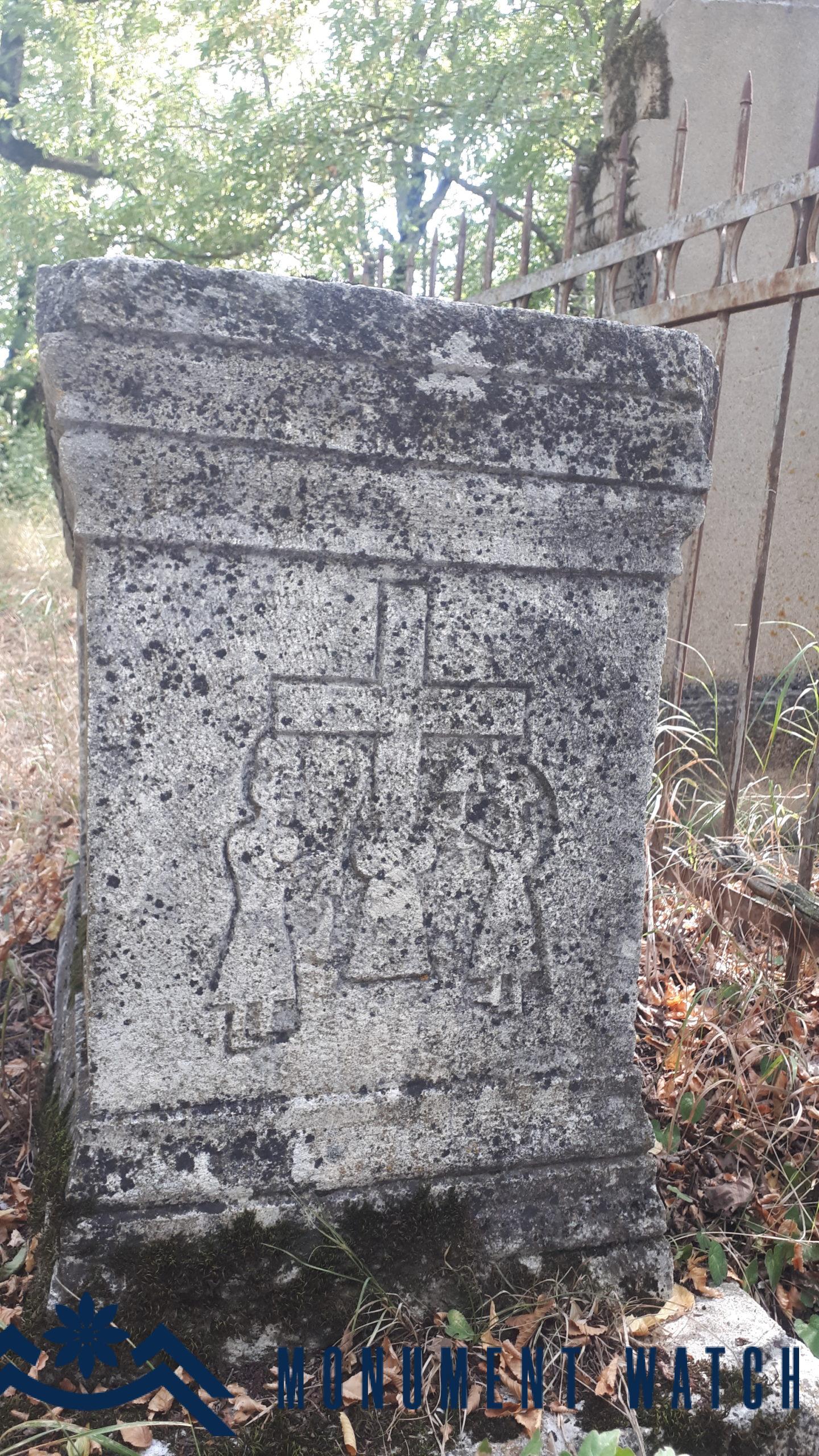The Monuments of Shikaqar Qaraglukh: The Cemetery of Khachin Khut
The cemetery is located on the forested hill to the east of the village Qaraglukh in Askeran region. The cemetery occupies an extremely vast area, covering approximately 0.3 hectares. Some of the tombstones are composed of simple, unpolished stones, but the majority are trapezoidal in shape (Figs. 1, 2). Some khachkars were relocated from their original locations (Fig. 3). Khachkar fragments of various sizes have been preserved. The cemetery's tombstones and khachkars can be classified into two chronological groups: the 13th–14th centuries and the 17th–20th centuries. Furthermore, the old-new burials are not categorized topographically; they are mostly mixed.


Fig. 1 The tombstones in the cemetery, 2021, photo by H. Petrosyan.

Fig. 3 The khachkar on the left side of the road to Shikakar, west of the cemetery, photo by H. Petrosyan.
Several khachkars in the cemetery's area are notable for their art style, size, and lithography. On the back of the khachkar is the inscription of one of them. The inscription says: "In 1253, during Hasan's reign, I Snpat raised this cross in the name of Christ as a land and tomb for myself and my wife Kata. May Christ protect our sons, Amen. "
The Hasan mentioned in the inscription is Hasan Jalal, the ruler of Khachen. He had one son and three daughters. His offspring, regardless of gender, are termed as sons in this circumstance.

Fig. 4 The inscription on the back of the khachkar, 2021; photo by G. Budaghyan.

Fig. 7 The lower part of the khachkar's inscription, photo by H. Petrosyan.

Fig. 8 The upper part of the khachkar’s inscription, photo by G. Budaghyan.

Fig. 2 One of the tombstones in the cemetery, 2021, photo by G. Budaghyan.
Snpat, his wife, Katan, and their child are depicted on the front of the khachkar (Figs. 5, 6). The family feast was a prominent theme in Artsakh khachkar sculpture. The following inscription may be found on the second khachkar, which is divided into two parts to the south of the first khackar: "We: Me and my sons, Papa [q], Snpat, Sargis (CAE 5, figs. 6, 7).

Fig. 5 The front part of the khachkar, photo by H. Petrosyan.

Fig. 6 The khachkar's sculpture in detail, photo by H. Petrosyan.
A gravestone with a relief of a horse rider holding a sword stands out among the new tombstones, on which we read. "This is a reliquary dedicated to the blessed memory of Harutyun Movsesian-Gregoreants, who sacrificed his young life for the nation on the day the village of Karaglukh was captured during the Turkish war. On September 23, 1918, he was murdered by a Turkish bullet in front of the two crosses. At the age of 35, "(Fig. 9)."
In the area known as Aghakar, east of Khach khut, traces of the settlement and several tombstones dating from the 16th and 17th centuries have been preserved.

Fig. 9 A Cemetery Tombstone, 2021, photo by G. Budaghyan.
Bibliography
- Barkhutaryants 1895—Barkhutaryants M., Artsakh, Baku, Aror.
2. CAE 1982: Corpus of Armenian Epigraphy, issue 5, Artsakh, Yerevan, made by S. Barkhudaryan, Yerevan, in 1982.
The Monuments of Shikaqar Qaraglukh: The Cemetery of Khachin Khut
Artsakh